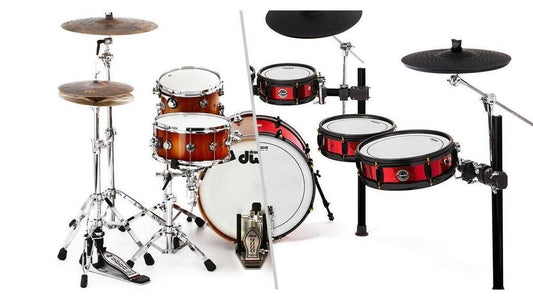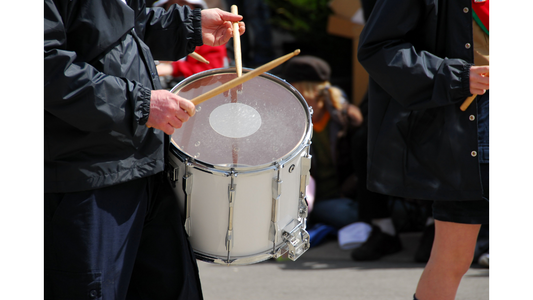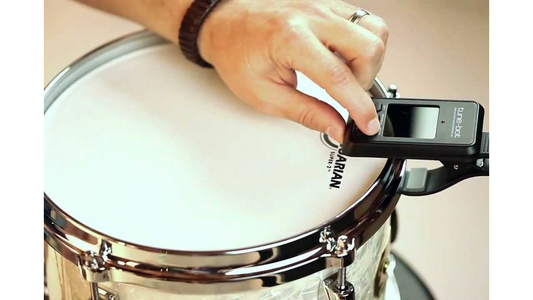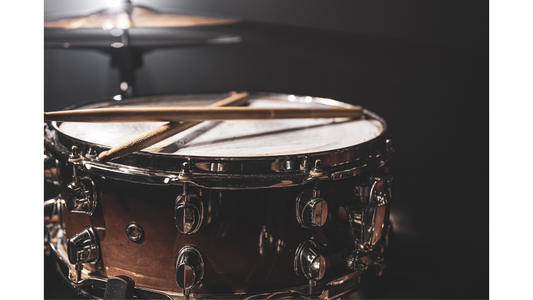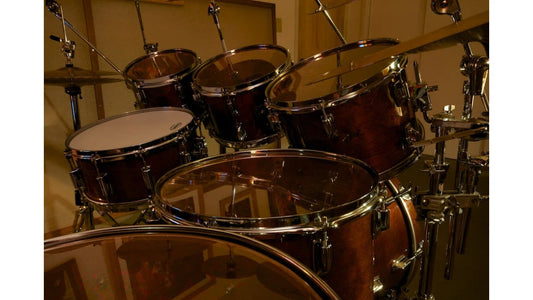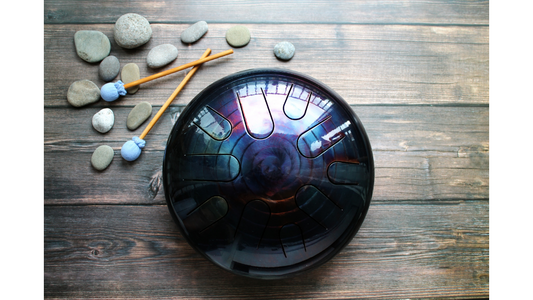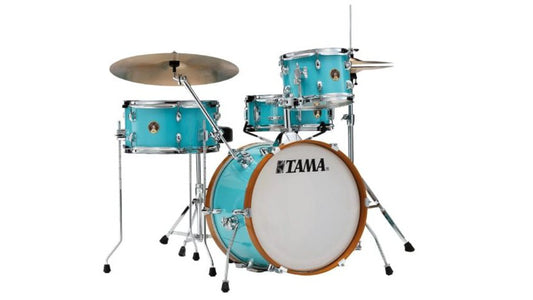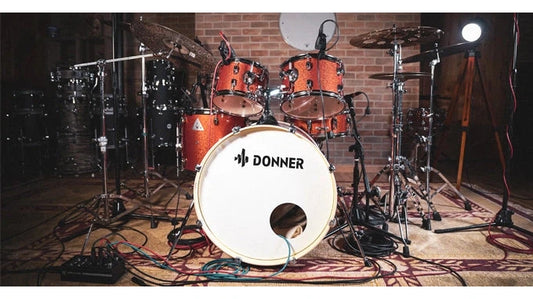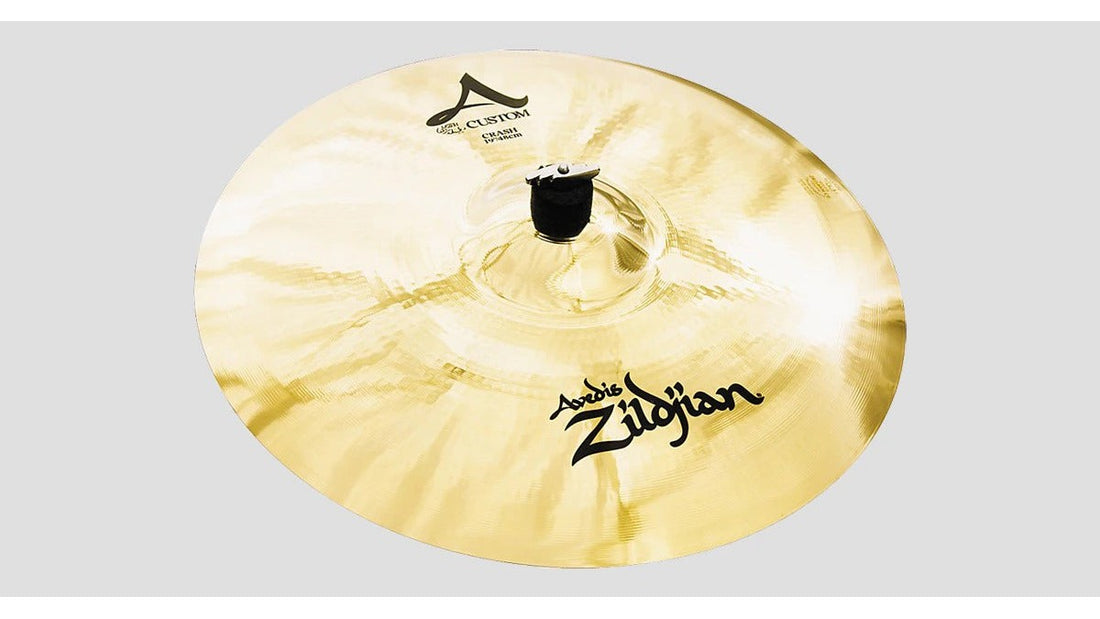
Cách Chọn Cymbal Phù Hợp Với Bộ Trống Của Bạn
Một bộ trống không có bộ cymbal xứng đáng cũng giống như một đĩa khoai tây chiên mà không có muối và sốt cà chua. Cymbal thêm gia vị và màu sắc cho tiếng trống của bạn. Trong hướng dẫn này, chúng tôi sẽ giúp bạn tìm ra cymbal nào phù hợp với âm nhạc, bộ trống và ngân sách của bạn.
Phần bổ sung phù hợp của cymbal cho bạn là gì?
Không có câu trả lời nhanh cho câu hỏi đó. Âm nhạc bạn chơi và ngân sách bạn có để chơi nên là những cân nhắc chính. Và cuối cùng, đôi tai của bạn sẽ là yếu tố quyết định. Cymbal bạn chọn phải phù hợp với sở thích âm nhạc của bạn và phù hợp về mặt âm thanh với phần còn lại của bộ trống.
Những người chơi trống jazz có lẽ sẽ muốn có dàn cymbal rất khác so với những mảng phù hợp với những tay trống trong ban nhạc metal hoặc hard rock. Cách tốt nhất là kiểm tra cách thiết lập cymbal của những tay trống yêu thích của bạn. Bạn có thể không sao chép được mọi yếu tố trong các lựa chọn cymbal của họ, nhưng bạn sẽ nhận được manh mối quan trọng về những gì hiệu quả và không hiệu quả trong bối cảnh âm nhạc mà họ chơi.
Khi bạn đã xác định được loại và kích cỡ cymbal phù hợp cho bộ trống của mình, bạn có thể tiến hành mua các model phù hợp với ngân sách. Như với hầu hết mọi thứ, tiền nào vải ấy. Cymbal cao cấp được làm bằng vật liệu đắt tiền hơn và đòi hỏi nhiều công sức hơn. Những chiếc cymbal giá thấp hơn vẫn có thể mang lại âm thanh thỏa mãn một cách đáng ngạc nhiên — có một số món hời thực sự được tìm thấy trong số những chiếc cymbal bình dân.
Cấu tạo của Cymbal
Tất cả cymbal được thiết kế để sử dụng với bộ trống đều thuộc loại treo — nghĩa là chúng được thiết kế để gắn trên các giá đỡ đứng tự do hoặc gắn vào các bộ phận của bộ trống. Một lỗ được khoan ở giữa cymbal để cho phép gắn cymbal vào giá đỡ. Hầu hết các cymbal đều có phần trung tâm nhô lên được gọi là chuông, cốc hoặc vòm (bell, cup, dome). Chơi chuông tạo ra âm thanh “pinging” cao hơn so với phần còn lại của cymbal. Phần còn lại của cymbal được gọi là cung (bow). Cymbal có độ dày thuôn nhọn rõ rệt từ chuông đến mép mỏng hơn. Phần dày hơn gần chuông được gọi là khu vực ride; phần mỏng hơn, bên ngoài là khu vực crash.
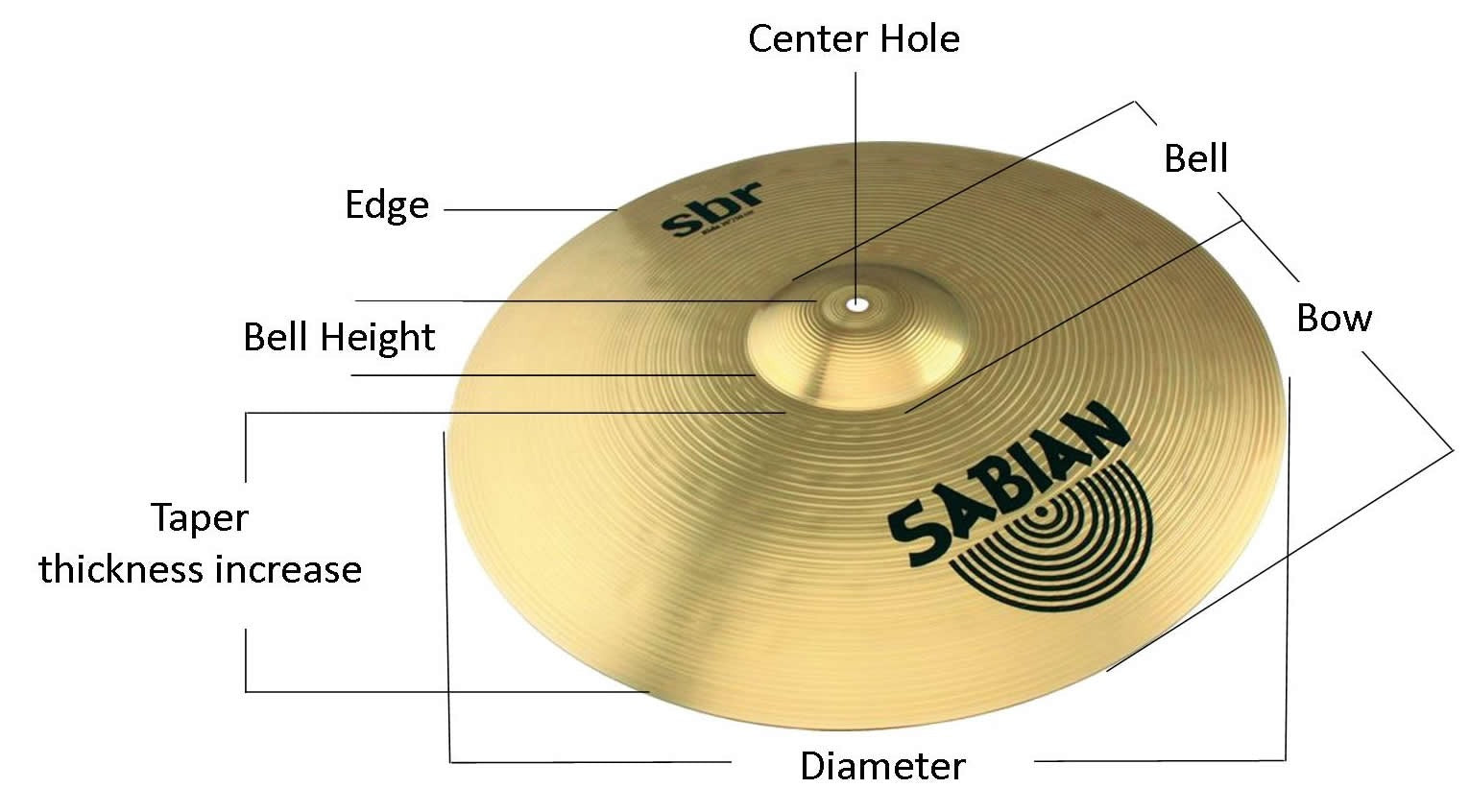
Kích thước cymbal được chỉ định bởi đường kính của chúng tính bằng inch hoặc milimét. Nói chung, cymbal lớn hơn sẽ to hơn và ngân dài hơn. Cymbal mỏng hơn có xu hướng có âm vực thấp hơn và phản hồi nhanh hơn. Cymbal dày hơn, nặng hơn sẽ tạo ra âm lượng lớn hơn và nhờ khả năng phát âm rõ ràng hơn khi đánh bằng dùi trống, âm thanh xuyên qua những âm thanh dày đặc được hòa trộn tốt hơn.
Cymbal được tạo ra như thế nào?
Hầu hết cymbal đều được đúc hoặc làm từ các tấm kim loại.
Cymbal đúc được chế tạo bằng cách đổ hợp kim kim loại thô, nóng chảy vào khuôn tròn. Các vật đúc sau đó được nung nóng, cán, tạo hình, rèn và tiện. Quá trình lâu dài này tạo ra cymbal với âm thanh đầy đủ, phức tạp mà nhiều người cảm thấy tốt hơn theo thời gian. Mỗi cymbal đúc có một đặc điểm âm thanh riêng biệt và độc nhất.
Thuật ngữ “rèn bằng tay – hand-hammered” có thể gây hiểu nhầm. Những chiếc cymbal tốt nhất được rèn bởi một nghệ nhân thực sự cầm búa, gõ từng nhát một. Cymbal rẻ hơn có thể được công nhân sử dụng máy đóng búa. Cymbal được rèn thủ công thực sự có xu hướng tạo ra các âm phong phú hơn, tối hơn, có âm vực thấp hơn và mỗi chiếc có chất âm khác nhau. Cymbal được rèn bằng máy thường sáng hơn, tạo ra âm sắc cao hơn và sắc nét hơn. Sự khác nhau giữa các cymbal làm từ máy cũng ít hơn.
Một số cymbal được bật trên máy tiện để tạo ra một số đặc điểm âm thanh nhất định. Việc tiện có thể được thực hiện trên bề mặt trên hoặc dưới hoặc cả hai. Nhiều cymbal có các dải được tiện và không được tiện, cung cấp nhiều tùy chọn âm thanh hơn tùy thuộc vào vị trí nào của cymbal được chơi.
Cymbal kim loại tấm được cắt từ những tấm kim loại lớn có độ dày và thành phần đồng nhất. Chúng có âm thanh rất đồng đều trong cùng một mẫu và thường rẻ hơn so với cymbal đúc. Một số cymbal dành cho sinh viên giá rẻ hơn có các dấu tiện và búa được ép trên bề mặt của chúng.
Có nhiều phương pháp xử lý đánh bóng hoặc hoàn thiện cymbal khác nhau. Những chiếc cymbal được tiện hoàn toàn thường có lớp sơn bóng trong suốt để tránh bị xỉn màu. Một số cymbal có lớp hoàn thiện “rực rỡ” hoặc “sáng sủa” đạt được khi đánh bóng tốc độ cao. Quá trình hoàn thiện thực sự có thể làm giảm âm thanh một chút.
Âm thanh cymbal là một sở thích rất cá nhân. Nhiều người chơi nhạc jazz thích âm thanh cymbal tối hơn, phức tạp hơn, trong khi những người chơi trống nhạc rock thường thích âm thanh sáng hơn, to hơn. Trong khi một số hãng khổng lồ sản xuất cymbal truyền thống tiếp tục thống trị thị trường, thì có vô số hãng khác tiếp tục mở rộng để bạn lựa chọn.
Một cymbal cho mọi vai trò trong bộ trống
Như chúng ta sẽ thấy bên dưới, mỗi loại cymbal được thiết kế để hoàn thành một vai trò cụ thể trong bộ trống hiện đại. Nhưng các quy tắc được thực hiện là để được phá vỡ. Nhiều tay trống sử dụng các hỗn hợp cymbal độc đáo để đạt được âm thanh riêng biệt của riêng họ. Hãy thử nghiệm với cymbal của các tay trống khác cũng như vị trí thiết lập cymbal của riêng bạn có thể dẫn đến một số hiệu ứng âm thanh thú vị.
Cymbal ride
Cymbal ride giữ một vị trí ổn định trong hầu hết các phong cách đánh trống. Thông thường, nó được đặt ở cực bên phải của tay trống (giả sử người đó thuận tay phải). Tên của nó bắt nguồn từ vai trò của nó, cung cấp một vai trò ổn định, quan trọng hơn. Trong khi các nhà sản xuất cymbal sản xuất các cymbal ride cụ thể, một số tay trống sử dụng cymbal hiệu ứng như chinas, pangs và cymbals sizzle để thay thế. Một lần nữa, các quy tắc được tạo ra là để phá vỡ áp dụng với cymbal.
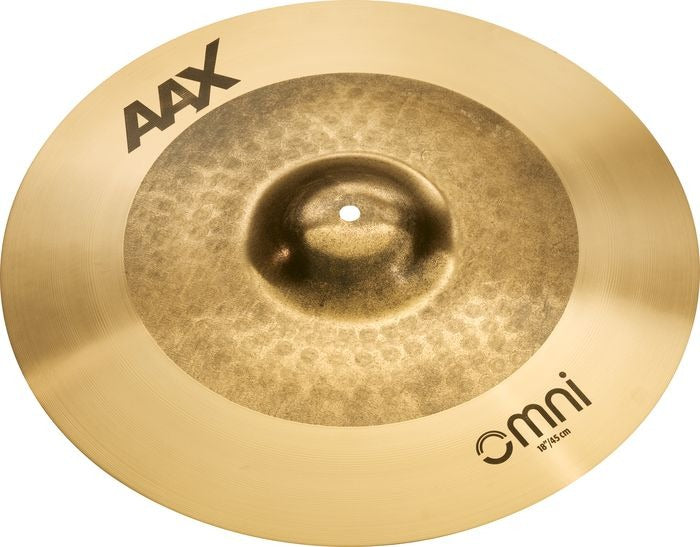
Bạn cũng sẽ bắt gặp những cymbal được chỉ định là crash/ride mang đến tiếng va chạm chậm và kéo dài. Đôi khi chúng được sử dụng làm cymbal treo duy nhất trong các bộ trống nhỏ. Một biến thể khác là cymbal flat (phẳng) không có chuông như thông thường. Các cymbal flat có tiếng va chạm khô khan và phổ biến đối với những người chơi trống jazz.
Cymbal Hi-Hat
Hi -hat thường được chơi cùng với trống bass và trống snare trong buổi biểu diễn. Bao gồm hai cymbal được gắn với nhau trên một giá đỡ và vận hành bằng một bàn đạp (pedal) giúp mở và đóng cặp cymbal, hi-hat tạo ra thứ gọi là âm thanh “chick” khi nó bị gậy đánh hoặc va chạm bằng bàn đạp. Người đánh trống kiểm soát âm thanh và độ bền của hi-hat bằng cách sử dụng các vị trí bàn đạp khác nhau và thay đổi mức độ áp lực của chân.
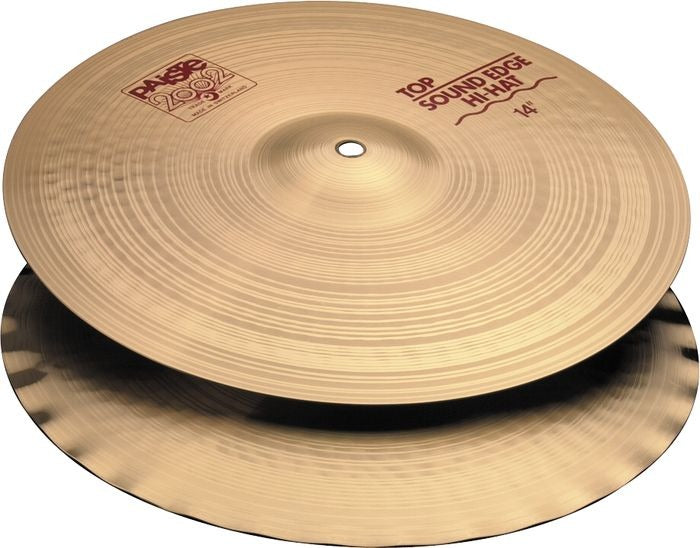
Một trong những kiểu đánh trống liên quan đến hi-hat là shuffle (xáo trộn nhịp). Để tạo nhịp xáo trộn, tay trống đánh vào cymbal trên cùng hai lần liên tiếp, lần đầu tiên khi mũ đóng và ngay trước khi đánh lần thứ hai để mũ mở ra. Người đánh trống để cymbal kêu trong giây lát trước khi đóng chúng lại. Shuffle chỉ là một trong số hàng chục kỹ thuật có thể được sử dụng để tạo ra nhịp điệu và nhịp điệu đối lập.
Mặc dù một cặp hi-hat 14 inch (35cm) là tiêu chuẩn hiện đại, nhưng đôi khi đường kính nhỏ hơn được sử dụng để ghi âm khi sử dụng kỹ thuật quay cận cảnh. Những tay trống hard rock chẳng hạn như John Bonham vĩ đại đôi khi sử dụng những hi-hat lớn hơn 15 inch. Trong quá khứ, hai cymbal tương tự nhau, nhưng ngày nay xu hướng nghiêng về cymbal phía dưới nặng hơn và cymbal phía trên nhẹ hơn. Có những trường hợp ngoại lệ. Ví dụ, những chiếc hi-hat Phiên bản tùy chỉnh Zildjian K của Steve Gadd đặt cymbal nặng hơn lên trên để có tiếng giòn. Những tay trống khác sử dụng cymbal không khớp với các kích cỡ khác nhau hoặc thậm chí từ các nhãn hiệu cymbal khác nhau. Một lần nữa, không có quy tắc nào; như với tất cả các cymbal trong bộ trống, không có kích thước nào phù hợp với tất cả.
Cymbal Crash
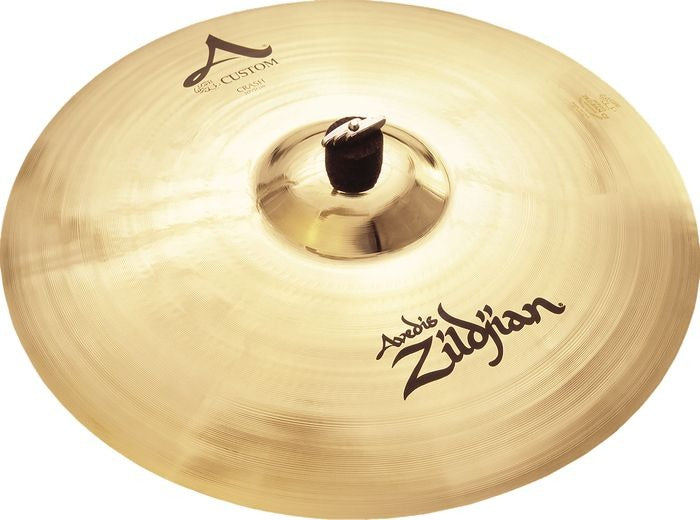
Zildjian A Custom Crash mang đến âm thanh tươi sáng, tự nhiên với âm bội phức tạp.
Cymbal crash thường được sử dụng để tạo ra các điểm nhấn lớn, xác định thay vì chơi một nhịp điệu ổn định. Hầu hết các bộ trống hiện đại thường có ít nhất một hoặc hai cymbal . Chúng có thể được chơi bằng dùi, bằng tay hoặc vồ để tạo ra nhiều màu sắc khác nhau. Những tay trống rock đôi khi đánh hai cú crash cùng một lúc để tạo ra một giọng cực kỳ mạnh mẽ. Bạn sẽ tìm thấy các cymbal crash với nhiều độ dày và kích cỡ từ nhỏ nhất là 8” (20cm) đến 24” (60cm) với phần lớn nằm trong khoảng 14”-18” (35cm – 45cm). Mặc dù hầu hết đều có cạnh khá mỏng, nhưng độ dày của các crash thay đổi đáng kể. Những người chơi trống hard rock và metal có xu hướng thích những crash dày hơn.
Cymbal Splash
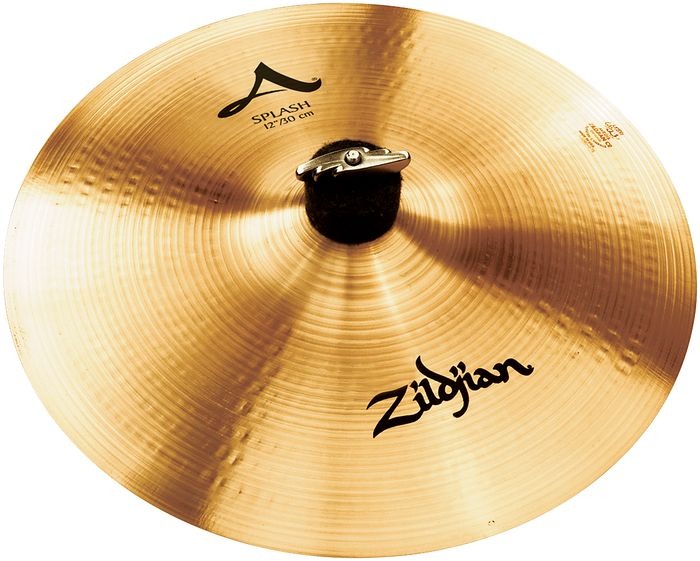
Zildjian A Splash có âm sáng và đầy biểu cảm.
Splashes là cymbal có điểm nhấn nhỏ nhất, thường có kích thước từ 6”-13” (15cm – 33cm). Cymbal Splash phổ biến với những người chơi trống jazz trong những năm 1920 và 1930, nhưng không còn được ưa chuộng. Chúng đã được hồi sinh phần lớn bởi tay trống Stewart Copeland, và những tiếng nổ nặng hơn phù hợp với nhạc rock đã sớm xuất hiện. Các cymbal kiểu Trung Quốc có đường kính dưới 14 inch (35cm) đôi khi được gọi là cymbal China, mặc dù cách gọi này khác nhau tùy theo nhà sản xuất.
Ngày nay, bạn sẽ tìm thấy nhiều loại Splash bao gồm cả cái gọi là salsa splash được dùng với timbales. Tiếng rất dày và tạo ra âm thanh giống như tiếng chuông; chúng có nhiều hình dạng khác nhau. Một số cymbal được thiết kế để sử dụng thành chuỗi với các cymbal khác và đôi khi đi theo bộ. Các giá treo cho tiếng kêu cũng đa dạng như chính cymbal.
Cymbal China và các hiệu ứng
Tên của cymbal China bắt nguồn từ sự tương đồng về hình ảnh và âm thanh với chiêng Trung Quốc. Cymbal China điển hình có hình nón và được lật lên ở mép của nó, nơi chuông gặp cung của cymbal. Hầu hết cymbal China có độ dày rất ít hoặc không thuôn nhọn, nhưng vẫn có những ngoại lệ đối với tất cả những đặc điểm chung về vật lý này. Cymbal China thường có đường kính từ 12”-26” (30cm – 66cm). Điều định nghĩa cho thấy âm của chúng thường tối tăm, tạp và dễ nổ.
Các cymbal như china và splash thường được coi là loại cymbal hiệu ứng , định nghĩa chính xác cho cymbal hiệu ứng rất khó nắm bắt. Nói chung, chúng được sử dụng theo những cách không nhịp điệu để tạo ra sự bùng nổ về màu sắc và điểm nhấn. Khi cymbal pang và swish — hai loại cymbal hiệu ứng — được sử dụng thay cho cymbal truyền thống, chúng thường không còn được coi là cymbal hiệu ứng nữa.
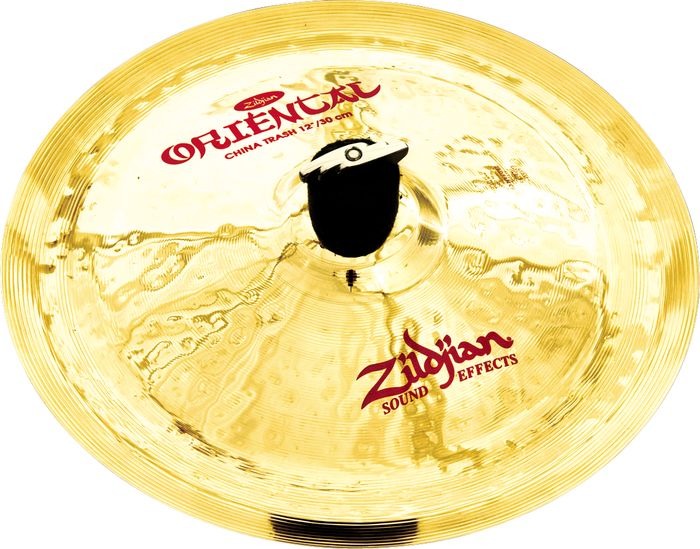
Cymbal Oriental China Trash của Zidjian có phản ứng bùng nổ với sự suy giảm nhanh chóng.
Cymbal hiệu ứng có nhiều biến thể đến chóng mặt. Bạn sẽ tìm thấy các mẫu có lỗ và đinh tán tạo ra hiệu ứng cắt, ù và ồn ào. Và có vô số thiết kế khác để tạo ra một loạt âm thanh tuyệt vời. Bầu trời là giới hạn còn các thiết kế và âm thanh của cymbal thì không là câu nói cho thấy sự đa dạng của chúng.
Gói cymbal — Một lựa chọn hợp túi tiền
Nhiều nhà sản xuất cung cấp các loại cymbal hoàn chỉnh với giá rất phải chăng. Đôi khi chúng được đóng gói theo thể loại âm nhạc mà chúng được thiết kế, với các gói cymbal nhạc rock là một sản phẩm rất phổ biến. Cymbal thành phần trong các gói này được kết hợp cẩn thận để bổ sung cho nhau về mặt âm thanh. Gói cymbal là một cách phù hợp với ngân sách dành cho người mới bắt đầu chơi trống.
Kết luận
Hi vọng tới đây, bạn đã có một ý tưởng khá tốt về những cân nhắc chính khi mua cymbal.
Chúng tôi muốn bạn hài lòng với giao dịch mua cymbal của mình.
Sau khi đọc hướng dẫn này, nếu bạn vẫn không chắc cymbal nào phù hợp với mình, hãy liên hệ với chúng tôi để được tư vấn tốt nhất!
